Your search for "schmidt rottluff" matched 37 page(s).
Showing results 11 to 20.
-
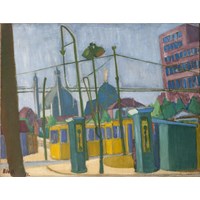 Martin Bloch
Martin Bloch
Martin Bloch (1883-1954) was born in Neisse, Silesia. He studied aesthetics with the Swiss art historian Heinrich Woelfflin in Munich and in 1907 he took drawing lessons in Berlin with Lovis Corinth as teacher. In 1911 Bloch exhibited at the art…
-
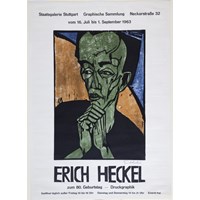 Erich Heckel
Erich Heckel
Erich Heckel (1883-1970) was born in Dobeln, Germany. He and Schmidt-Rottluff studied architecture in Dresden but after founding the “Brücke” group, both left the University in 1905. In 1910, Heckel met the dancer Sidi Riha, who posed for some of…
-
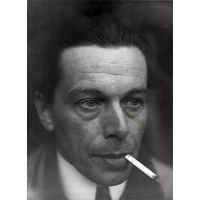 Ernst Ludwig Kirchner
Ernst Ludwig Kirchner
Ernst Ludwig Kirchner (1880-1938) was born in Aschaffenburg, Germany. He graduated with a diploma in engineering from the Royal College of Science and Technology in Munich in 1905, but was devoted to art, and after graduating, Kirchner and fellow…
-
 Emil Nolde
Emil Nolde
Emil Nolde (1867-1956) was born as Emil Hansen in Nolde, a town in the North of Germany. He was initially trained as a woodcarver but started to paint as an independent artist in 1898. Before he settled in 1903 in Alsen during the summer and in…
-
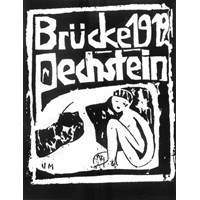 Die Brücke (The Bridge)
Die Brücke (The Bridge)
They were: Ernst Ludwig Kirchner (1880-1938), Erich Heckel (1883-1970), Karl Schmidt-Rottluff (1884-1976) and Fritz Bleyl (who left shortly afterwards). The group was later joined by Max Pechstein (1881-1955), Otto Mueller (1874-1930) and Emil…
-
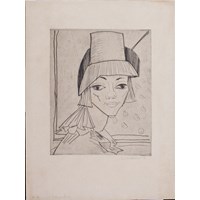 Young Woman with High Hat
Young Woman with High Hat
Erich Heckel was a painter, printmaker and sculptor, well known for being one of the co-founders of the Expressionist group Die Brücke, along with Ernst Ludwig Kirchner and Karl Schmidt-Rottluff. A keen and experimental printmaker as well as a…
-
 Head with Red-Black Hair
Head with Red-Black Hair
Nolde had a complete mastery of the watercolour medium. The head, artificially lit from below, appears to have an independent life of its own as it floats into the top left-hand corner of the paper. While the slash of red across the mouth indicates…
-
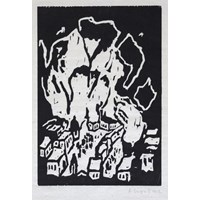 Heads Over Houses
Heads Over Houses
Segal’s vision of heads looking down on a village is intentionally rough-hewn, linking to the Brücke, yet perhaps connects more strongly to the approach of Der Blaue Reiter, the rising human forms becoming spiritually attuned to nature, their once…
-
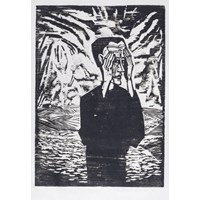 Man on a Plain
Man on a Plain
The taut, attenuated forms of this self-portrait and the pulsating lines coming from the sky reflect the oppressiveness and strain of the war years. The composition has been compared to Munch’s lithograph of The Scream of 1895 where the…
-
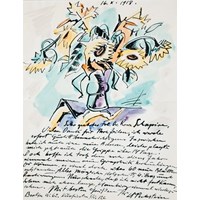 Two Illustrated Letters
Two Illustrated Letters
Dr Rosa Schapire (1874-1954) was an important German art-historian and an influential supporter of the German expressionist art group Die Brücke. Based in Hamburg from 1908, she wrote supportive reviews for the Brücke artists, admiring the work of…